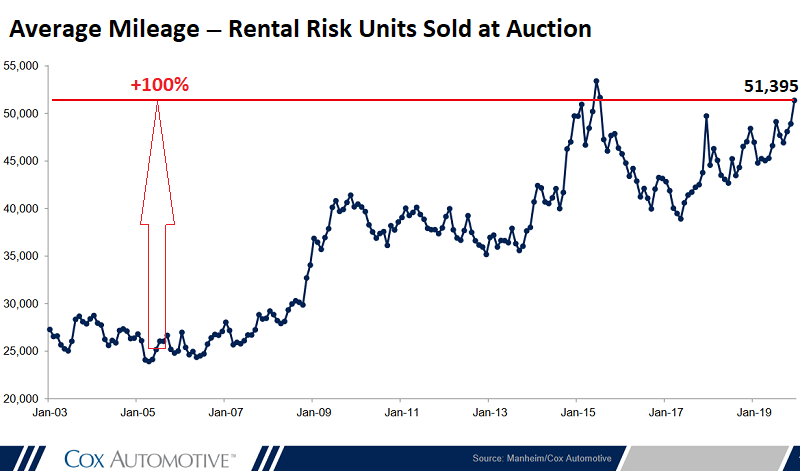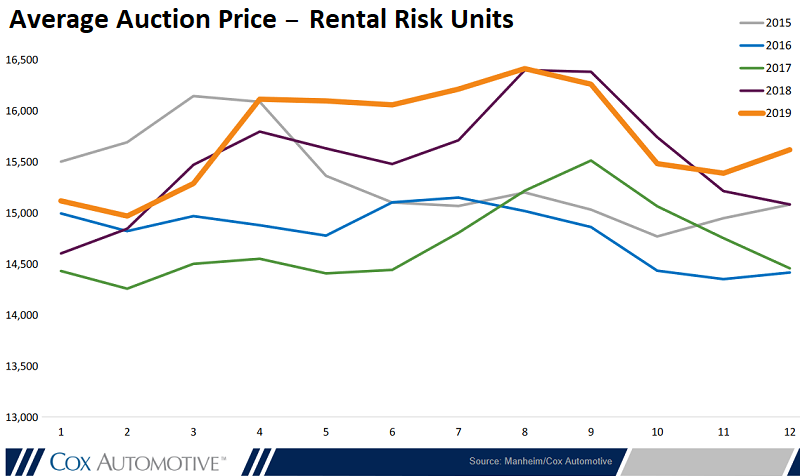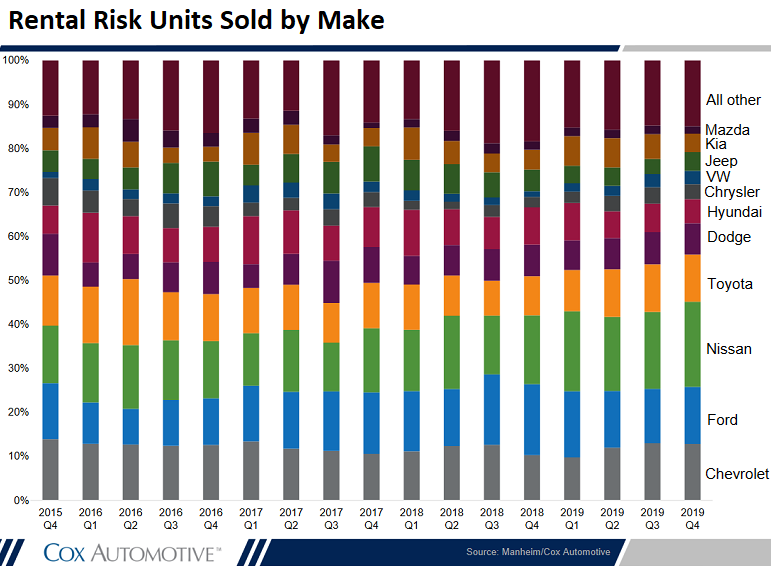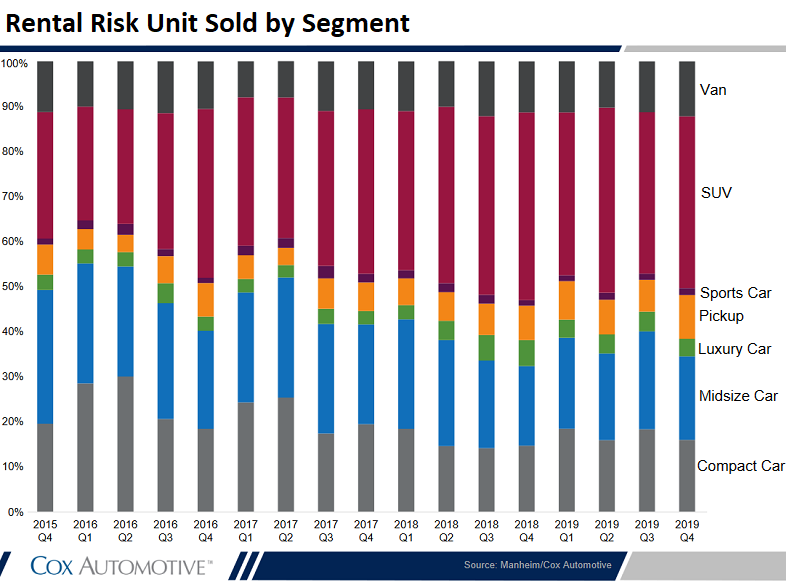The Changing Supply of Used Vehicles.
By Wolf Richter for WOLF STREET.
If you have been renting cars periodically, you will have noticed that it’s not unusual now to get into a rental car that has 45,000 miles or even 50,000 miles on the odometer. But 10 years ago, a rental car with 30,000 miles on the odometer would have caused you to raise your eyebrows; and in the early 1990s, a rental car with 25,000 miles would have given you the willies.
This is an important factor for people who’re buying late-model used cars because a substantial part of the supply in the two-year-old range are former rental units. And there are many good deals to be had.
Every year, millions of used vehicles are sold at auctions around the US to franchised dealers (such as Ford or Chevy dealers) and to independent used-vehicle dealers. Manheim, a unit of Cox Automotive, and the largest auto-auction house in the US, runs about 8 million of these vehicles through its auction venues a year. And today it released its quarterly data about these vehicles, including the average miles of former rental units.
In December 2019, the average miles of those rental cars sold at its auctions rose 6% from a year ago to 51,395 miles. This was about double the average mileage in 2005-2006.
These are “rental risk” vehicles: Rental car companies bought them outright from the automakers and then sell them two years or so later at whatever price the market might bear – as opposed to vehicles that rental car companies buy with repurchase guarantees where the automakers agree in advance to buy them back at fixed terms. The “rental risk” units are so called because they put the rental car company at risk in terms of the resale value of the car.
This chart from Manheim shows how the average mileage has surged over those years from around 25,000 in 2005 and 2006 to 51,395 in December (red added, click to enlarge):
Even though average mileage has increased on those “rental risk” units, wholesale prices at Manheim’s auctions have increased also. In December, even as the average mileage rose 6% from a year ago, the average price rose 3.5% from a year ago $15,600. The fat orange line in this chart from Manheim represents 2019 prices of rental risk units (click to enlarge):
Which brands ran through the auctions as rental risk units the most? Nissan is having problems in the US. Its deliveries in 2019 dropped nearly 10% to 1.35 million units and were down 15.5% from the peak in 2017. But its brand was number one in terms of rental risk units being sold at auction in Q4, showing how aggressive Nissan had gotten in selling to rental fleets a couple of years ago. Nissan was followed by Ford (#2, blue), Chevrolet (#3, gray), and Toyota (#4, orange):
Midsize cars used to dominate the rental risk units. But in recent years, rental car companies – with an eye on resale values because that’s a risk for them – have followed the trend of consumer preferences for buying SUVs, hoping that auction prices of SUVs will remain high. So SUVs (red) have become the dominant segment among rental risk units going through the auction. Midsize cars (blue) have sunk to a distant number two. Note also the decrease in compact cars (gray), and the increase in pickups (orange):
Not all rental car fleets sell all their vehicles at auction. Some fleets, such as Enterprise and affiliated brands Alamo and National, also sell directly to the consumer, trying to fetch higher prices for their cars. Enterprise says on its website that it has an inventory of over 7,000 vehicles for sale nationwide. A quick look at the site shows that mileage by vehicle spans the spectrum, from the low teens to over 45,000 miles. Low-mileage vehicles come with higher price tags.
But Enterprise also sells many of its cars at auction. The decision is not random. For example, it might sell all its high-mileage units at auction, which would skew the average mileage of rental risk vehicles going through auction.
Rental cars with 50,000 miles or more on the odometer are getting ripe for a new set of tires in the near future. This can get costly for many models. And this point at the latest is when rental car companies will pull the ripcord because they don’t want to buy new tires for all their cars just before they sell them.
The aging of rental cars in terms of mileage fits into the theme of the rising age of the average vehicle on the road, which has hit a new record of 11.8 years, up from 8.8 years in 2000. A vehicle with 50,000 miles today can look nearly new and run perfectly for many more miles.
It makes sense for rental fleets to keep their vehicles longer, as long as repair costs don’t pile up. And the fact that rental fleets are keeping their vehicles this long shows that repair costs are not piling up. However, the limit would be the tires. Rental fleets would want to sell their vehicles well before the tread is worn to the legal limit. And buyers will have to budget for a new set of tires over the near term.



